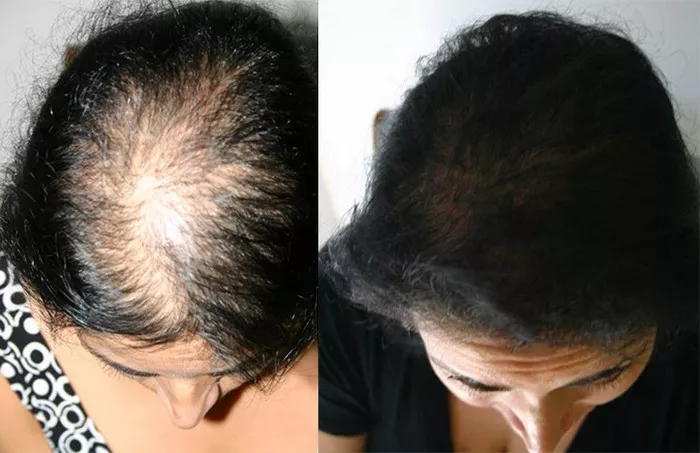Undergoing a hair transplant is a significant decision for individuals seeking to address hair loss and restore their hairline. After the procedure, it’s essential to have realistic expectations about the results and understand what to expect during the recovery period. In this comprehensive guide, we will explore what to expect six months after a hair transplant, including the healing process, visible changes in hair growth, and nurturing techniques to achieve soft and silky hair. By having a clear understanding of the journey ahead, individuals can approach their hair transplant with confidence and make informed decisions about their post-operative care.
Understanding the Hair Transplant Process
A hair transplant is a surgical procedure that involves extracting hair follicles from a donor area (typically the back or sides of the scalp) and implanting them into areas of thinning or baldness. The procedure can be performed using two primary techniques: follicular unit transplantation (FUT) or follicular unit extraction (FUE). The choice of technique depends on individual factors and the recommendations of the hair transplant surgeon.
The Healing Journey: Hair Growth Timeline
The healing and hair growth timeline after a hair transplant is a gradual process that varies from person to person. Understanding the general progression can provide insight into what to expect at the six-month mark:
Initial Healing:
In the first few weeks after the procedure, the transplanted hair follicles undergo a healing process. Scabbing, redness, and mild swelling are common during this phase. Following the post-operative care instructions provided by your surgeon is crucial to ensure proper healing.
Shedding of Transplanted Hair:
Around two to three weeks after the surgery, the transplanted hair may enter a shedding phase known as “shock loss.” This is a normal part of the hair growth cycle, and it happens as the transplanted follicles transition from the resting phase to the growth phase.
Dormancy Period:
After the shedding phase, the transplanted hair follicles enter a dormant stage, where no visible growth is observed. This period can last for several weeks to a few months. It’s important to remain patient during this phase, as it is a natural part of the hair growth cycle.
Regrowth Begins:
Around three to four months after the transplant, you may start noticing new hair growth. Initially, the hair may appear thin and fine, but it will gradually thicken over time. The rate of growth varies among individuals, but by the six-month mark, significant improvements in hair density can be expected.
Visible Changes: Regrowth and Hair Thickness
At the six-month mark, the transplanted hair follicles have had sufficient time to establish themselves and begin regrowing. While individual experiences may vary, here are some visible changes you can expect:
Increased Hair Density:
The transplanted hair will continue to grow and contribute to increased hair density in the recipient area. The appearance of thicker and fuller hair can be expected, although it may not reach its full potential at the six-month milestone.
Improved Hair Texture:
As the transplanted hair continues to mature, the texture and coarseness may improve. Initially, the hair may be finer and less robust, but it will gradually gain strength and thickness over time.
Natural Hairline Formation:
The newly transplanted hair will begin to blend with the existing hair, creating a more natural-looking hairline. The precise aesthetic outcome will depend on factors such as the surgical technique, the skill of the surgeon, and individual hair characteristics.
Nurturing Transplanted Hair for Softness and Silkiness
To ensure the softness and silkiness of the transplanted hair, it is essential to implement nurturing techniques:
Gentle Hair Care Routine:
Follow a gentle hair care routine using mild shampoos and conditioners recommended by your surgeon. Avoid excessive rubbing or scratching of the scalp during washing and drying.
Scalp Massage:
Gently massage your scalp using your fingertips to promote blood circulation to the hair follicles. This can help nourish the transplanted hair and stimulate growth. However, be careful not to apply excessive pressure or rub the transplanted area directly.
Nutrient-Rich Diet:
Maintain a balanced diet rich in vitamins, minerals, and proteins to support overall hair health. Adequate nutrition plays a vital role in the growth and quality of your transplanted hair.
Protect from UV Rays:
Protect your scalp and transplanted hair from harmful UV rays by wearing a hat or applying sunscreen when exposed to the sun. UV radiation can damage the hair and scalp, affecting their softness and silkiness.
Conclusion:
Understanding what to expect six months after a hair transplant can help individuals set realistic expectations and actively participate in their post-operative care. While the full results of a hair transplant may take up to a year or more to become apparent, by the six-month mark, significant improvements in hair density and texture can be observed. By nurturing the transplanted hair through a gentle hair care routine, scalp massage, a nutrient-rich diet, and UV protection, individuals can enhance the softness and silkiness of their new hair. Remember, individual experiences may vary, and it’s important to consult with your hair transplant surgeon for personalized guidance throughout the recovery journey.


